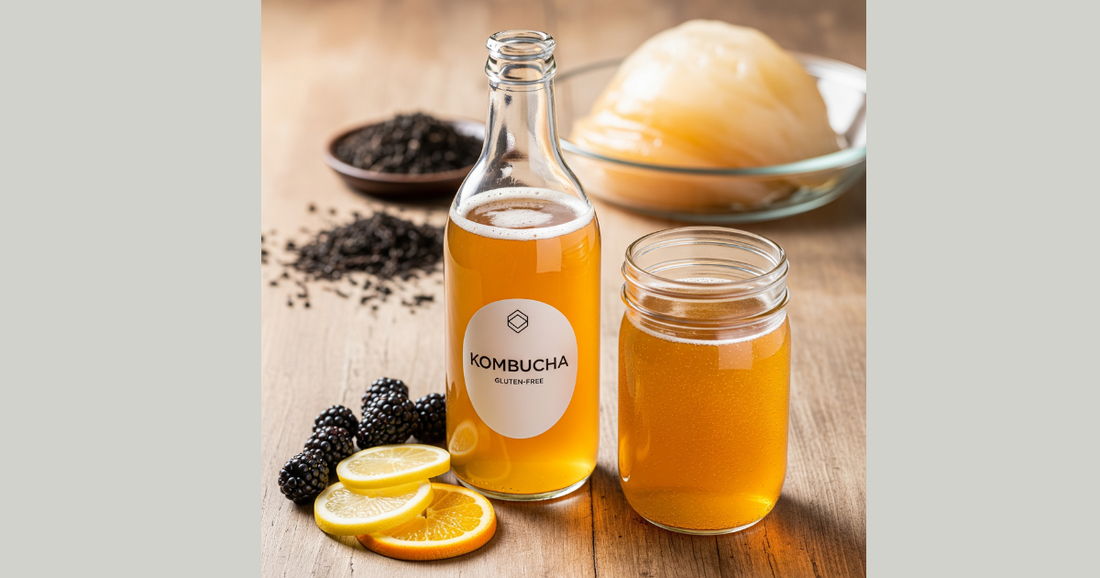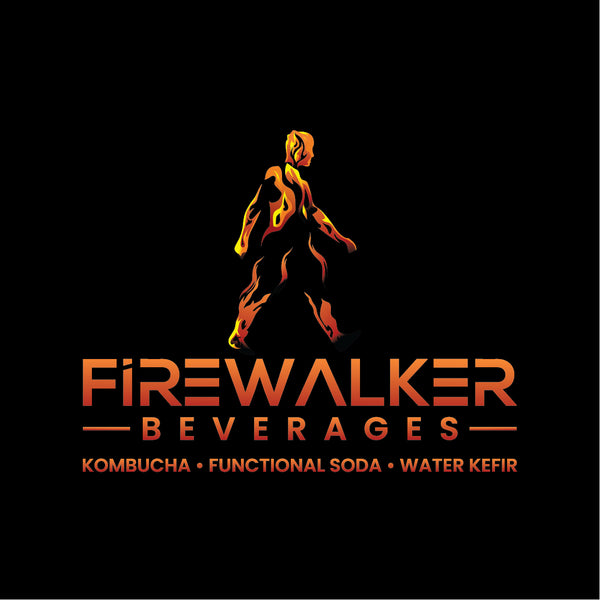
Is Kombucha Gluten-Free? What Labels Usually Mean
Share
The Short Answer
Most plain kombucha begins with tea, sugar, water, and a SCOBY, which are naturally gluten-free ingredients. Flavorings and processing choices are where gluten can be present, so reading the label matters.
How U.S. “Gluten-Free” Labeling Works
For FDA-regulated foods and drinks (which includes non-alcoholic kombucha under 0.5% ABV), a “gluten-free” claim means the food contains <20 parts per million (ppm) gluten and does not include ingredients from wheat, barley, or rye unless processed to remove gluten and compliant with the rule.
Fermented foods have an extra wrinkle: because testing after fermentation isn’t always reliable, the FDA’s 2020 final rule says manufacturers must keep records showing the ingredients were gluten-free before fermentation. That rule applies to items like kombucha.
If your kombucha is ≥0.5% ABV and therefore regulated by the Alcohol and Tobacco Tax and Trade Bureau (think “hard” kombucha), different labeling rules apply.
The Alcohol and Tobacco Tax and Trade Bureau allows “gluten-free” if the product is made without gluten-containing grains and cross-contact is controlled; beverages derived from gluten grains cannot be labeled “gluten-free” and instead may use carefully worded statements (e.g., “processed to remove gluten”) with a disclaimer.
Did you know that the entire line of Firewalker Beverages kombucha is gluten free? Enjoy it without worry – buy now.
When Kombucha Might Not be Gluten-Free
-
Malt or barley-based flavorings. “Malt,” “barley malt,” “malt extract,” and “malt syrup” are barley derivatives and can’t be used in foods labeled “gluten-free.” If you see “malt” on a kombucha label, do not assume it’s gluten-free.
-
Alcoholic/“hard” kombucha made with a malt base or produced in breweries that handle barley. Read the label for a TTB-approved gluten statement.
-
“Natural flavors.” Most are gluten-free, but some can come from gluten-containing sources; if there’s no gluten-free claim and the flavor sounds grain-based (e.g., “malt”), contact the producer. (Celiac advocacy groups recommend checking with manufacturers when in doubt.)
Tip: Wheat must be disclosed in a U.S. allergen statement, but barley is not a major allergen, so you often have to scan the ingredient list for words like malt or barley yourself.
Celiac organizations advise avoiding products that list these unless they’re specifically certified gluten-free.
No natural flavors in sight! Blackberry Sangria is full of real fruit and fizz, everything you want from kombucha. Click here to shop.
How to Read a Kombucha Label Like a Pro
-
Look for a clear “gluten-free” claim on non-alcoholic kombucha; under FDA rules that means <20 ppm and compliant ingredients.
-
Scan for red-flag words: malt, barley malt, malt extract, malt syrup. If present, it should not claim gluten-free.
-
Check alcohol by volume. If ≥0.5% ABV, the product is under TTB rules. A “gluten-free” claim is allowed only when made without gluten grains and with cross-contact controls; otherwise you’ll see different wording.
-
When in doubt, ask. Reputable brands will confirm whether flavors or processing introduce gluten and whether they test to the <20 ppm threshold. Celiac organizations endorse that standard.
FAQs
Is plain kombucha naturally gluten-free?
Yes. It is typically brewed from tea, sugar, water, and a SCOBY, which do not contain gluten. The risk is from certain add-ins (like malt) or cross-contact. Always verify with the label.
Can “hard kombucha” be gluten-free?
Sometimes. If it is made without gluten grains and cross-contact is controlled, the TTB can allow a “gluten-free” claim. If any part comes from gluten grains, the label cannot say “gluten-free” and may use different phrasing with a disclaimer.
What does <20 ppm actually mean?
It is the U.S. standard for gluten-free labeling and stands for “parts per million”. Celiac experts and the FDA use <20 ppm as the threshold that is generally tolerated by people with celiac disease.
Are “malt flavor” or “malt extract” ever safe?
Not for gluten-free labeling. These are barley-derived by default and disqualify a gluten-free claim under FDA rules.
References
-
FDA — Gluten-Free Labeling (21 CFR 101.91): definition, <20 ppm threshold. eCFR
-
FDA — Q&A on Gluten-Free Labeling: malt/malt extract cannot be in foods labeled gluten-free. U.S. Food and Drug Administration
-
FDA — Final Rule (2020): Gluten-Free Labeling of Fermented or Hydrolyzed Foods: recordkeeping for fermented foods like kombucha. Federal Register+1
-
TTB Ruling 2020-2: gluten content statements for wine, spirits, and malt beverages (applies to hard kombucha). Alcohol and Tobacco Tax and Trade Bureau
-
Celiac Disease Foundation — Label Reading & Standard: support for <20 ppm and practical label tips. Celiac Disease Foundation+1
- Colorado State University — Food Source Information: Kombucha basics (ingredients). CSU College of Health Sciences
